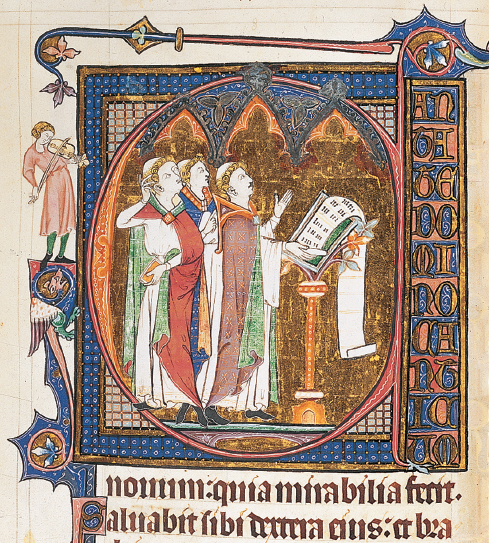Plainchant
The official music of the Catholic Church in the Middle Ages and far beyond was a great repertory of melodies designated for the liturgy. This is the system of plainchant (or plainsong), widely known as Gregorian chant.

Monks singing plainchant, depicted within an illuminated initial letter C in a late medieval manuscript. The whimsical little stringed-
It is called “plain” because it is unaccompanied, monophonic (one-